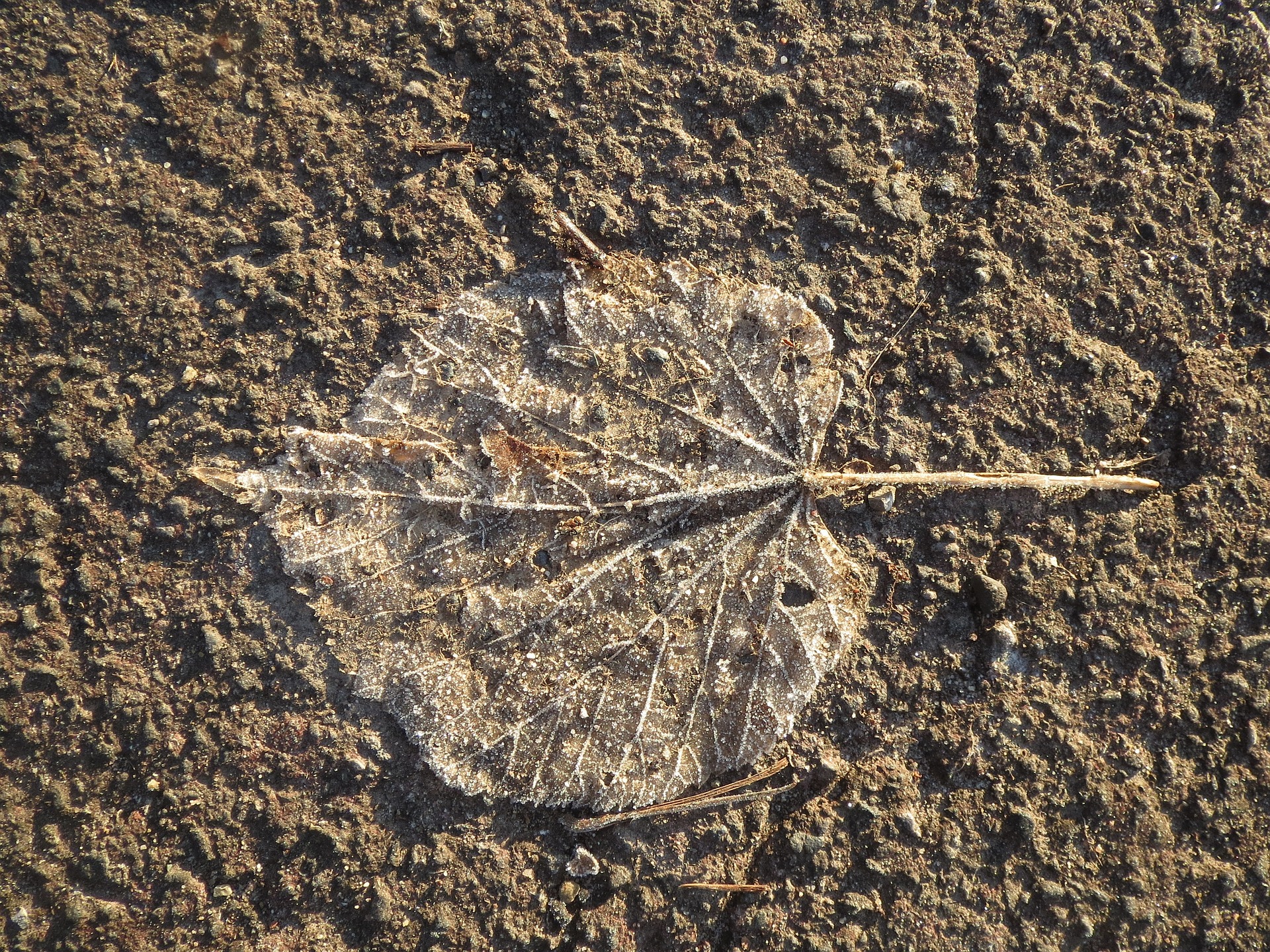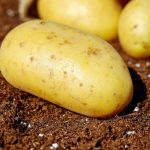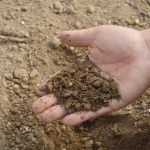Have you ever wondered about putting lime on your garden, and questioned whether lime is acidic or alkaline? Will it raise or lower the PH in your garden? It’s important to know this before you try and use it, as going the wrong way could damage your plants and ruin your growing conditions.
Lime is a means of making your soil more alkaline, raising the pH value so that the soil’s acidity is reduced. For plants that prefer high alkaline soils, this is a good option, especially if your soil is generally neutral or acidic. You can buy lime commercially and dig it into the garden to increase your soil’s pH value.
Why Might I Want A High pH?
You may want to raise the pH value of your soil in order to make it more suitable for some kinds of plants. Depending on what you grow, acidic soil can be problematic, and if you need to make it more alkaline, liming it is usually the most effective and easiest method.
If your soil is too acidic, certain plants will struggle to take in nutrients effectively, and may end up deficient in nutrients, even when these are in the soil. Unless the conditions are right, your plant may not be able to access them. That’s one of the reasons that soil acidity is important to pay attention to.
Remember, anything over 7.0 is already considered alkaline, so you are unlikely to want to add lime to your soil if that’s the case (unless you’ve got a plant that likes seriously high pH values). 7.0 is neutral soil, and anything below 7.0 is acidic.
There are lots of acid loving plants, so it’s a good idea to check the requirements of the specific plant that you want to grow, as well as the current pH of your garden’s soil, before you start adding lime to it.
How Can pH Values Be Measured?
Before you add lime to your garden, you should check how acidic your soil is. You may find that it doesn’t need lime, or needs less lime than you thought. If you are adding lime, it’s important to know how much you plan to increase the pH value by so that you know how much to add.
You can use a litmus test to give yourself an indicator of how acidic your soil is, but it’s better to get a soil test kit, since this will give you far more accurate and useful information.
You really need a good understanding of how much lime to add, because making your soil excessively alkaline could cause more problems than it solves.
Soil test kits can be purchased inexpensively and it’s a good idea to check your soil every few years, as conditions will change over time. Knowing plenty about your soil helps you to make the right decisions for your garden.
Which Plants Thrive In Alkaline Soil?
So, what can you grow once you have added lime to your garden? There are many plants that prefer alkaline soil, but some of the most popular ones are:
- lavender
- lily of the valley
- marjoram
- clover
- honeysuckle
- lilac
There are many others too, but as you can see, it’s easy to help some beautiful flowers thrive by making the soil more alkaline with a good dose of lime. Next, let’s look at how to go about adding lime to your garden.
When Should Lime Be Applied?
Lime doesn’t need to be added for a specific season, but it is important to recognize that lime really needs to be dug into the soil to have the desired effect. If you don’t dig it in, it will have an extremely slow effect on the soil, and can take years to noticeably alter the pH.
That means it is much better to prepare the ground with lime before planting, because once you have got established plants growing in the ground you want to add lime to, it is much harder to do it without upsetting the plants and harming their roots.
If you are liming a vegetable bed in preparation for some alkaline-loving vegetables, you should do this in winter, when the bed is dormant. This will allow you to dig the lime in thoroughly and it will have a few months to take effect on the ground.
If you are planting anything new in your garden and you have somewhat acidic soil, you should check the plant’s requirements before you put it in the ground. If it would rather be in soil with a high pH value, add the lime before you add the plant.
This will make it much easier to apply lime effectively and will avoid issues with the lime just sitting on the surface and not having the desired result.
How Should Lime Be Applied?
Lime can be spread on top of the soil and then dug into it. You need to maximize the contact between the lime and the soil, as this will help to distribute the lime and ensure it takes effect. Lime is not very water-soluble, so it takes some time for it to naturally start raising the pH of the soil.
This slowness is increased by the buffer that soil has against its pH being raised – which we’ll cover in the next section.
What Is A “Buffer”?
The soil’s “buffer” against lime means its ability to neutralize the lime without the soil’s pH changing. If you just add a small quantity of lime to an area of soil, you might find that the pH hasn’t changed at all when you do a second soil test.
Why? This might seem quite odd.
Essentially, the soil is resistant to change, and this is called its “buffering capacity.” It is somewhat complicated, but the acidity in the soil is split into three pools, which are residual, active, and exchangeable. The hydrogen and aluminum in one pool can replenish that in another pool when the lime starts to reduce the acidity.
This prevents the change from taking place, “buffering” the soil against the pH alteration. This will stop the lime from having an effect up to a point, although the buffering can only go so far, and eventually, the soil’s acidity will start to shift.
A soil test kit will let you know the buffer ability of your soil, and it’s a good idea to find this out before you calculate how much lime you need to add to your garden. Not knowing this will result in you adding too little lime, and not achieving the desired alkalinity.
Make sure that the test kit you purchase can actually measure the soil’s buffer ability if you’re looking at changing the alkalinity of your soil, or you won’t have the information that you need in order to do this properly.
What Happens If I Add Too Much Lime?
You might be wondering whether it matters whether you add too much lime to your garden, and whether careful measuring is really necessary. Of course, it depends on your plants; some are far more sensitive than others, and some will thrive in high alkaline soils.
However, adding too much lime will usually cause problems. Plant burn is one of the commonest, where the lime burns the plant’s roots and they struggle to grow. Lime-filled soil is also prone to accumulating salts, which can further damage your plants, clogging up their roots.
Furthermore, high pH levels make it more difficult for some plants to absorb nutrients effectively. The nutrients may be present in the soil, but certain plants won’t be able to take them up, and will therefore suffer from nutrient deficiencies.
You might see this in yellowing leaves or poor growth. Often, excessive lime makes it hard for plants to take in manganese, iron, and some other minerals, and this may cause the plants to look scorched. If you are sure your plants haven’t been hit by a sun overdose, check the pH of your soil.
Are There Alternatives To Lime?
You may not want to add lime to your garden, and that could lead to the question of whether there are other options for increasing the alkalinity of your soil.
There aren’t as many options as there are for increasing acidity, but there are a few. For example, you can use wood ashes. These, sprinkled thickly on top of the soil, will increase the pH over a period of time, although they may not have such a lasting effect as lime.
Remember, it takes time for this sort of treatment to take effect, and over a few years, the soil’s pH may revert to its previous levels. Be patient, and keep an eye on the pH value.
Conclusion: Is Lime Acidic Or Alkaline?
So, garden lime is alkaline, and it’s a commonly used method for raising the pH of the soil so that it suits alkaline loving plants. It needs to be dug into the soil, however, rather than spread on top, which means it’s important to plan this alteration in advance of planting.



